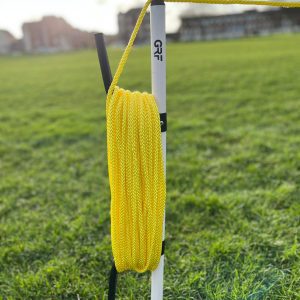A matchday is a significant learning opportunity for players and should be treated as such. Coaches should focus upon helping each player to maximise this opportunity and embrace the matchday experience. A good start point for coaches is to be clear about what players will try to learn on matchday. Too often coaches try and fix everything which can lead to a lack of focus and confusion for players.
When planning for matchday consider the following:
1. What is success?
2. Consistency with training objectives/focus
What is success?
What success means and looks like generally differs for player to player. Coaches should develop an appreciation each player’s perspective enhancing their understanding of the individual and their motivation.
The coach’s role is to help players and both training and matchday should be about the players not the coach. Consequently, the coach alone should not decide the success of a matchday and nor should the outcome of the match.
Consistency with the training focus
Continuation of the training theme on matchday allows players to demonstrate and extend their learning. This also helps the coach to be specific in their observation and with their feedback. Resultantly, the messages communicated to players have a purpose and support learning.
Team selection top tips
1. Equal opportunities to learn
A coach has a duty of care to ensure that each player is given equal opportunity to learn. Give each player the same amount of time on the field with challenges relevant to the needs of the individual.
2. Select teams on rotation
Ensure all players are given opportunity to start matches. If a player doesn’t start one week, ensure they start next week.
3. Encourage and provide opportunities for all players to experience different positions.
Rarely will a young player play in one position throughout their footballing experience. Being exposed to different positions presents players with a variety of pictures of the game, helping them to learn a variety of roles and responsibilities and enabling them to make the link between different positions.
4. Don’t rotate positions too frequently
Be careful not to rotate positions too frequently as this can hinder motivation, confidence and learning, particularly as players get older. Consider the player who finally gets an opportunity to play as the striker but doesn’t see much of the ball because the opposition are stronger and dominate the game.
Three games in any given position presents opportunities for a player to familiarise themselves with the role as well as face different opponents and challenges allowing learning to take place.
5. Player Ownership
Allow the players to pick the team. Young players select teams, players and formations on computer games such as Football Manager and FIFA and are adept at doing so. Allowing them to select the matchday team engages players in peer learning, a powerful form of cooperative learning.
To maximise the learning opportunity affinity groups of 4-6 players are recommended. This encourages all players to share their views and reduces the dominance of individual players.
Team and induvidual challenges
Magic 3
It is crucial not to overload players with information that they won’t remember. Three simple bits of information is ample. One way of structuring challenges is to set a challenge for the team, one for each unit (defence/midfield/attack), and one for each individual.
This format encourages teamwork whilst allowing for individual achievement. Challenges can be set in a number of ways.
1. Coach sets challenges for players
2. Players set the challenges
3. Player challenge cards
Challenges set by the coach allow alignment with the training objectives and ensure challenges are pitched appropriately. Coaches should reflect on recent training sessions and ask:
What was he/she good at?
What does he/she need more help with or practice at doing?
The challenges should emerge from your answers. Importantly, the challenges should be alternated to ensure the player has a chance to showcase what they are good at as well as what they need more practice at.
Allowing players to set their own challenges can lead to increased buy-in. However, be sure to ask why they’ve set the challenge and what success will look like? When players can articulate the meaning of the challenge it shows an understanding of the game and an awareness of where they are at in their learning.
Role models
Young players love emulating their football idols do, so why not base challenges on what their idols do?
1. Players pick a challenge card with a footballer on the front [see right], for and the challenge on the reverse becomes their individual challenge throughout the match:
Language
The language used when setting individual challenges should focus on things under the player’s control. When attempting a challenge there are many variables that determine success. Setting a challenge such as score 3 goals or 5 tackles are not within a player’s control and should be avoided.
About Ceri
Role: Lecturer in Sports Development and Coaching
Follow: @CeriBowley








0 Comments